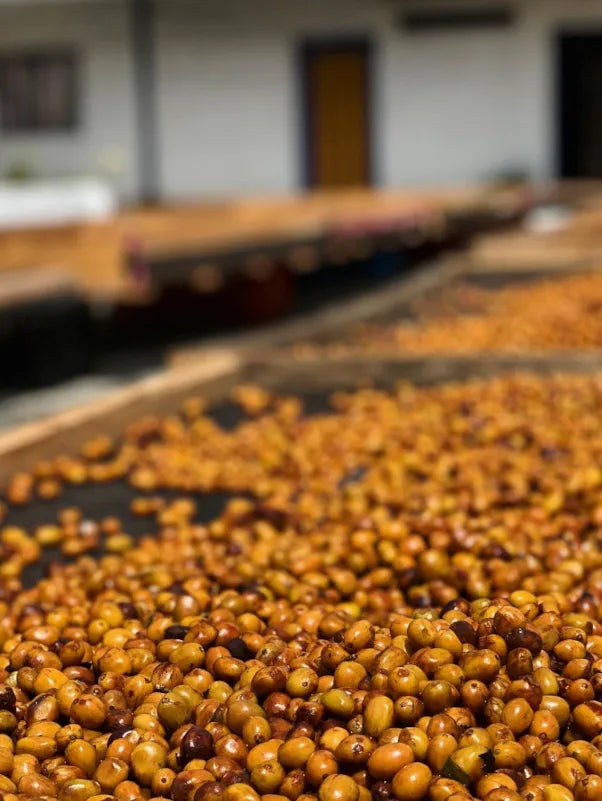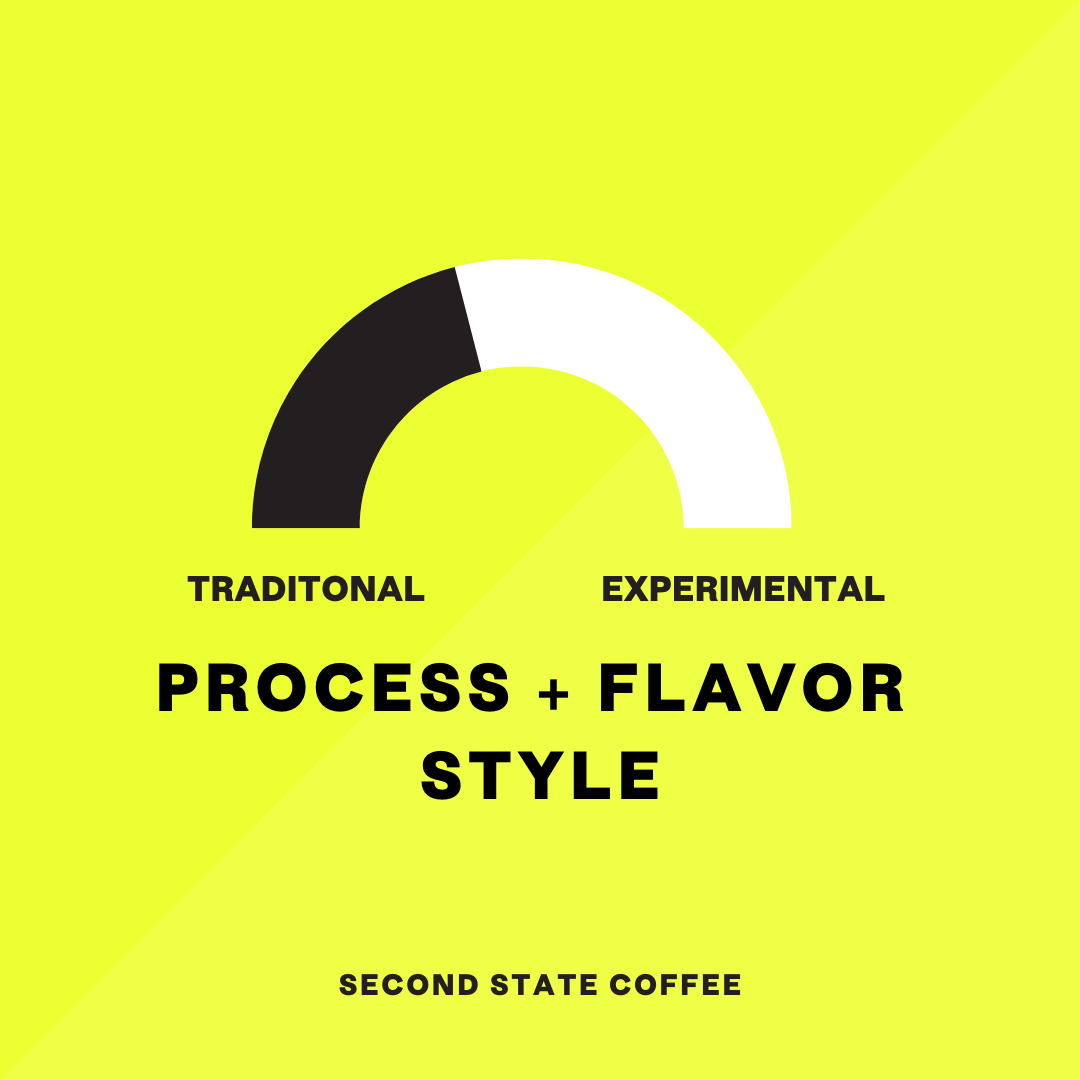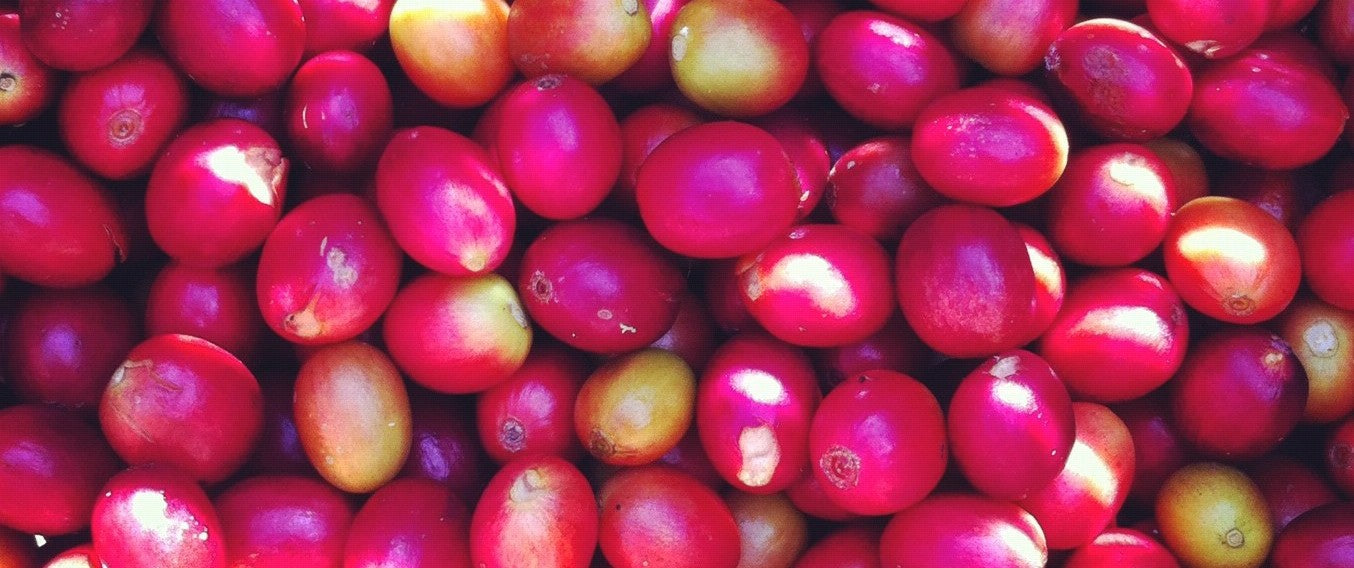Add description, images, menus and links to your mega menu
A column with no settings can be used as a spacer
Link to your collections, sales and even external links
Add up to five columns
Add description, images, menus and links to your mega menu
A column with no settings can be used as a spacer
Link to your collections, sales and even external links
Add up to five columns
A column with no settings can be used as a spacer
Link to your collections, sales and even external links
Add up to five columns
A column with no settings can be used as a spacer
Link to your collections, sales and even external links
Add up to five columns
Myth busting: Fermentation and Flavor
March 25, 2025 4 min read

Fermentation Isn’t a Flavor — It’s a Process
In the world of specialty coffee, few words are thrown around more — and understood less — than fermentation.
You’ve seen it on labels (even ours!): Anaerobic! Experimental! 72 hours! Winey! Funky!
But most of what’s written about fermentation in coffee barely scratches the surface — or worse, spreads misinformation.
At its core, fermentation isn’t about chasing wild flavors. It’s about control, clarity, and transformation. And to understand it, we need to start with what it really is — and what it’s not.
🧬 Fermentation Is a Biochemical Process, Not a Flavor Note
Fermentation is a metabolic process in which microorganisms (primarily yeasts and bacteria) consume sugars and produce byproducts like organic acids, alcohols, and CO₂. In coffee, this happens organically once the cherry is off the tree but is something that is (hopefully) deeply controlled and may be sped up or slowed down in the post-harvest processing of coffee cherries.
This stage is crucial not because it adds flavor in a vacuum, but because it unlocks or transforms the precursors already present in the fruit. As Lucia Solis — a trained winemaker turned coffee fermentation specialist — often explains, fermentation doesn’t introduce new flavors that weren’t already in the coffee. It modifies what’s already there, often in subtle but measurable ways.
🔍 Control > Creativity: Why Process Matters
Contrary to what popular marketing suggests, "longer" or "anaerobic" doesn’t mean “better.” While there have been advanced techniques in fermentation that allowed quality improvements in coffee, there’s no universal recipe and it isn't easy. Time, temperature, pH, microbial population, oxygen levels — they all interact in complex ways. Chasing numbers or buzzwords is inaccessible to many producers and so is a lot of biochemical education. When we see successful processing, producers are observing, adapting, and maintaining microbial consistency lot after lot.
As consultant and writer Christopher Feran has noted, fermentation is not some exotic hack to make low-quality coffee taste good. In fact, uncontrolled fermentation often leads to instability — off-flavors, inconsistency, and even food safety concerns. This risk can be a huge barrier for producers with a market that demands "funky, wild, anaerobic, thermal washed, yeast-inoculated" coffees.
While successful lots with advanced techniques can be really mind-blowing, proper fermentation is repeatable, intentional, and hygienic. It’s not about introducing “funk.” It’s about optimizing mucilage removal, sensory development, and cup clarity. Remember: This isn't improvisation, it's precision.
🧪 Aerobic vs. Anaerobic: Not Opposites — Just Containers
One of the most persistent myths is that “anaerobic” fermentation automatically delivers exotic or intense flavor. In truth, all fermentations begin aerobically until oxygen is depleted. Anaerobic conditions — achieved by sealing tanks — simply favor different microbial populations, like lactic acid bacteria, over others like acetic acid bacteria.
But unless you’re managing the microbial community, sealing a tank can lead to anything from clarity and roundness to rot and over-fermentation. “Anaerobic” is a condition — not a method, and not a guarantee of quality.
🍇 What About Co-Fermentation?
Co-fermentation refers to the practice of fermenting coffee with additional ingredients — typically fruits, herbs, or other botanicals — introduced directly into the fermentation tank.
This process has gained attention for the flavor modulation it can bring to a coffee. For example, adding pineapple or citrus peel may encourage the growth of certain microbes, shift the sugar composition, or subtly steer the fermentation toward brighter, fruitier outcomes.
But here’s the key: co-fermentation doesn’t infuse the coffee like a flavored syrup. According to experts like Lucia Solis and Christopher Feran, the added ingredients act as inputs into the microbial ecology, not as direct flavor agents. That means:
-
The fruit isn't absorbed by the beans like a sponge
-
The impact depends on microbial activity, temperature, and fermentation time
-
The process must still be controlled — otherwise, you're introducing spoilage risk
Done intentionally, co-fermentation can be a tool for education, experimentation, and flavor shaping — but it must be understood as biological modulation, not flavoring.
🌱 Why It Matters for Young Producers
Fermentation is not just a trend to follow but a skill to be practiced — with real consequences for producer success. Through small-scale fermentation experiments and generous mentors, young farmers can learn:
-
How to monitor temperature, pH, and sugar levels
-
What microbes are active — and why that matters
-
How to evaluate results in the cup and improve with each batch
The Development Lot, for example, reflects this type of work. It’s not a flavor bomb — it’s a blend of small experimental lots, each one a product of hands-on learning. By combining them, producers gain real-time feedback and build confidence in their post-harvest practices — all with the safety net of a guaranteed outlet.
🧠 Drink With Curiosity
Fermentation is a process, not a flavor category. When done well, it improves clarity, sweetness, and structure. When done poorly, it muddies the cup. But in either case, it’s never magic --- even if it tastes like it. It’s biology.
And for the next generation of producers — those who are choosing this path intentionally — learning that biology is key to building a sustainable, skill-driven future in coffee.
Leave a comment
Comments will be approved before showing up.



